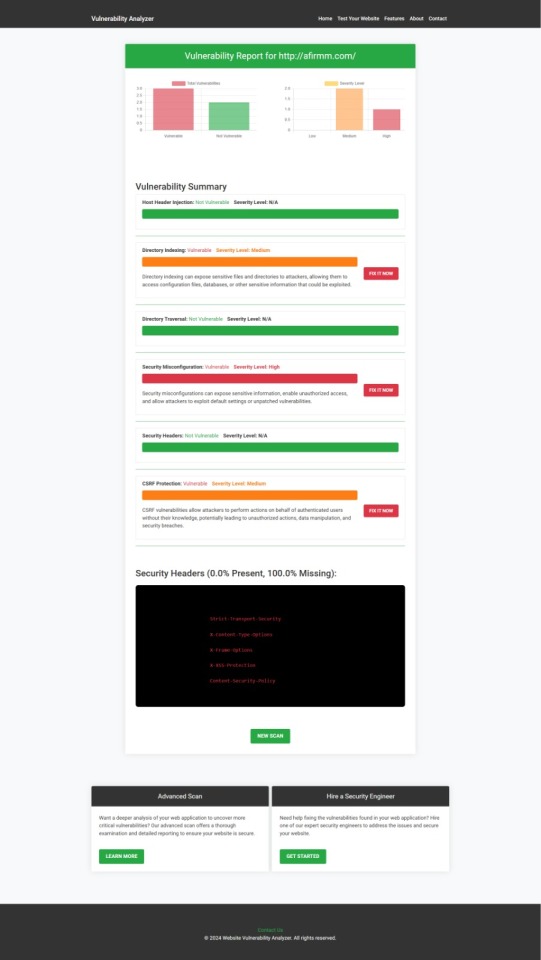#sql cursor
Explore tagged Tumblr posts
Text
In a DBMS (Database Management System), a cursor is a control structure that allows you to retrieve and manipulate rows in a result set one at a time, offering precise row-level access and navigation. Unlike SQL queries that process sets of rows together, a cursor allows precise row-by-row control, which is particularly useful in procedural operations or when logic depends on sequential processing.
1 note
·
View note
Text
SQL Injection in RESTful APIs: Identify and Prevent Vulnerabilities
SQL Injection (SQLi) in RESTful APIs: What You Need to Know
RESTful APIs are crucial for modern applications, enabling seamless communication between systems. However, this convenience comes with risks, one of the most common being SQL Injection (SQLi). In this blog, we’ll explore what SQLi is, its impact on APIs, and how to prevent it, complete with a practical coding example to bolster your understanding.

What Is SQL Injection?
SQL Injection is a cyberattack where an attacker injects malicious SQL statements into input fields, exploiting vulnerabilities in an application's database query execution. When it comes to RESTful APIs, SQLi typically targets endpoints that interact with databases.
How Does SQL Injection Affect RESTful APIs?
RESTful APIs are often exposed to public networks, making them prime targets. Attackers exploit insecure endpoints to:
Access or manipulate sensitive data.
Delete or corrupt databases.
Bypass authentication mechanisms.
Example of a Vulnerable API Endpoint
Consider an API endpoint for retrieving user details based on their ID:
from flask import Flask, request import sqlite3
app = Flask(name)
@app.route('/user', methods=['GET']) def get_user(): user_id = request.args.get('id') conn = sqlite3.connect('database.db') cursor = conn.cursor() query = f"SELECT * FROM users WHERE id = {user_id}" # Vulnerable to SQLi cursor.execute(query) result = cursor.fetchone() return {'user': result}, 200
if name == 'main': app.run(debug=True)
Here, the endpoint directly embeds user input (user_id) into the SQL query without validation, making it vulnerable to SQL Injection.
Secure API Endpoint Against SQLi
To prevent SQLi, always use parameterized queries:
@app.route('/user', methods=['GET']) def get_user(): user_id = request.args.get('id') conn = sqlite3.connect('database.db') cursor = conn.cursor() query = "SELECT * FROM users WHERE id = ?" cursor.execute(query, (user_id,)) result = cursor.fetchone() return {'user': result}, 200
In this approach, the user input is sanitized, eliminating the risk of malicious SQL execution.
How Our Free Tool Can Help
Our free Website Security Checker your web application for vulnerabilities, including SQL Injection risks. Below is a screenshot of the tool's homepage:

Upload your website details to receive a comprehensive vulnerability assessment report, as shown below:

These tools help identify potential weaknesses in your APIs and provide actionable insights to secure your system.
Preventing SQLi in RESTful APIs
Here are some tips to secure your APIs:
Use Prepared Statements: Always parameterize your queries.
Implement Input Validation: Sanitize and validate user input.
Regularly Test Your APIs: Use tools like ours to detect vulnerabilities.
Least Privilege Principle: Restrict database permissions to minimize potential damage.
Final Thoughts
SQL Injection is a pervasive threat, especially in RESTful APIs. By understanding the vulnerabilities and implementing best practices, you can significantly reduce the risks. Leverage tools like our free Website Security Checker to stay ahead of potential threats and secure your systems effectively.
Explore our tool now for a quick Website Security Check.
#cyber security#cybersecurity#data security#pentesting#security#sql#the security breach show#sqlserver#rest api
2 notes
·
View notes
Text

PL/SQL Tutorial: A Quick Guide
This PL/SQL tutorial infographic provides a concise overview of key concepts, including procedures, triggers, functions, and cursors. Perfect for beginners, this guide outlines essential syntax, real-world use cases, and coding tips to enhance your database development skills. Whether you're learning for interviews or real-world projects, this guide will help you master PL/SQL efficiently and effectively.
CONTACT INFORMATION
Email: [email protected]
Phone No. : +91-9599086977
Location: G-13, 2nd Floor, Sec-3, Noida, UP, 201301, India
Website: https://www.tpointtech.com/pl-sql-tutorial
0 notes
Text
instagram
Understanding Your Code:
Your Python code performs a variety of tasks, including:
Quantum Circuit Simulation (Qiskit): Simulates a simple quantum circuit.
GitHub Repository Status Check: Checks if a GitHub repository is accessible.
DNS Lookup/Webpage Query Prediction: Predicts usage based on the time of day.
C Library Integration: Calls functions from a C library (Viable.so).
Octal Value Operations: Works with octal values and DNS severity levels.
Ternary Operator Usage: Demonstrates the use of ternary operators.
Cosmos Data Structure: Represents solstices, equinoxes, weeks, and days.
Machine Learning (Naive Bayes and KNN): Trains and evaluates machine learning models.
Data Visualization: Plots the results of machine learning predictions.
Integrating Your Code with PostgreSQL:
Here's how we can integrate your code with your PostgreSQL database:
Logging DNS Queries:
Modify your code to log DNS queries into the dns_query_logs table.
Whenever your AI software performs a DNS lookup, insert a new row into dns_query_logs with the query time, query type, domain name, and result.
This will provide a persistent record of your DNS activity.
Storing DNS Records:
If your AI software retrieves DNS records, store them in the dns_records table.
This will allow you to analyze and process DNS data over time.
You might need to parse the DNS response and extract the relevant information.
Storing Configuration Settings:
Move configuration settings from your code to the configurations table.
This will make it easier to manage and update settings without modifying your code.
For example, you could store API keys, DNS server addresses, and other parameters.
Storing Hierarchical Data:
If your AI software works with hierarchical data (e.g., DNS zones, network topologies), store it in the hierarchical_data table.
This will allow you to represent and query hierarchical relationships.
Storing Analysis Results:
Store the results of your AI analysis in the database.
For example, you could store:
Detected anomalies in DNS traffic
Security threats identified
Predictions made by your machine learning models
This will allow you to track and analyze your AI software's performance.
Connecting Your Code to PostgreSQL:
Use a Python database connector library (e.g., psycopg2 or asyncpg) to connect to your PostgreSQL database.
Implement functions to:
Insert data into your tables
Retrieve data from your tables
Update data in your tables
Delete data from your tables
Next Steps:
Install the psycopg2 library:
pip install psycopg2-binary
Modify your code to connect to your PostgreSQL database.
Use the psycopg2 library to establish a connection.
Create a cursor object to execute SQL queries.
Implement functions to insert data into the dns_query_logs table.
Modify your DNS query logic to insert a new row into dns_query_logs whenever a query is made.
Let's start by modifying your code to connect to your PostgreSQL database and insert data into the dns_query_logs table.
0 notes
Text
🚀 FREE SQL & PL/SQL Workshop - Learn Cursors in Oracle! 🚀
💡 Want to level up your SQL & PL/SQL skills? Join our FREE hands-on workshop with Mr. Shiva Chaitanya and gain valuable database programming knowledge.
📅 Date: 12th & 13th March 2025 🕕 Time: 6:00 PM (IST) 🔗 Register Here: https://t.ly/CuOR12
📌 What You’ll Learn: ✔️ SQL & PL/SQL Cursors explained ✔️ Hands-on database exercises ✔️ Expert guidance from industry professionals
💡 Don't miss out! Seats are limited, so register now!
📢 Tag a friend who should join!

0 notes
Text
Cursor in SQL
In SQL, a cursor is a temporary workstation that is allocated by the database server during the execution of a statement.
It is a database object that allows us to access data of one row at a time. This concept of SQL is useful when the user wants to update the rows of the table one by one.
The cursor in SQL is the same as the looping technique of other programming languages. The collection of tuples held by the cursor is known as the active set.
In SQL database systems, users define the cursor using DECLARE statement and take the SELECT statement as the parameter, which helps in returning the set of rows.

0 notes
Text
Performance issue with same SQL ID, same bind variable but different execution plan in Oracle
We encountered a performance issue where the same SQL ID with the same bind variable results in different execution plans due to being used by different applications. Disabling this parameter fixes the issue: alter session set "_optim_peek_user_binds"=false Note: https://smarttechways.com/2019/10/11/explain-adaptive-cursor-sharing-bind-peeking-in-oracle/ Explain the parameter:…
0 notes
Text
Mastering Oracle Top Courses for Building a Successful Career in Database Management
Oracle has been a leader in database technology for decades, offering a robust suite of products ranging from cloud services to enterprise-level solutions. For anyone looking to advance their career in IT, mastering Oracle technologies is a valuable investment. Whether you're an aspiring database administrator, developer, or IT professional, Oracle courses provide the knowledge and certification needed to excel.
1. Oracle Database Administration
Oracle Database is the backbone of many critical applications across industries. Learning to manage, configure, and troubleshoot Oracle databases is a highly sought-after skill.
Course Overview: The Oracle Database Administration courses cover core concepts such as database installation, configuration, backup and recovery, performance tuning, and security management. You’ll learn how to effectively manage Oracle databases in various environments, ensuring high availability and data integrity.
Key Topics:
Database Architecture
Backup & Recovery Techniques
Data Guard & Real Application Clusters (RAC)
Performance Tuning
Certification: Oracle Certified Associate (OCA) and Oracle Certified Professional (OCP)
Recommended for: Those who want to work as database administrators or in IT infrastructure roles.
2. Oracle SQL and PL/SQL Programming
SQL (Structured Query Language) is the foundation of Oracle databases, and PL/SQL is Oracle's procedural extension to SQL. Proficiency in SQL and PL/SQL is essential for anyone working with Oracle databases, whether you're developing applications or querying data.
Course Overview: Learn how to write efficient SQL queries, create stored procedures, triggers, and functions, and manage large datasets. You’ll also get a strong grasp of database design principles.
Key Topics:
SQL Querying & Data Manipulation
Data Modeling and Normalization
Advanced PL/SQL Features (Triggers, Cursors, Packages)
Error Handling and Debugging
Certification: Oracle Database SQL Certified Associate
Recommended for: Developers, data analysts, and anyone who works directly with databases.
3. Oracle Cloud Infrastructure (OCI)
As businesses increasingly shift to the cloud, Oracle Cloud Infrastructure (OCI) has become a major player in the enterprise cloud market. Mastering OCI can open doors to roles in cloud architecture, cloud security, and cloud operations.
Course Overview: Oracle Cloud Infrastructure courses teach how to design, deploy, and manage cloud-based applications on the Oracle Cloud. You’ll also learn how to integrate OCI with on-premises systems and other cloud platforms.
Key Topics:
OCI Core Services (Compute, Storage, Networking)
Cloud Security and Identity Management
Autonomous Database on OCI
Cloud Cost Optimization
Certification: Oracle Cloud Infrastructure Architect Associate
Recommended for: Cloud professionals, systems architects, and anyone interested in cloud technologies.
4. Oracle E-Business Suite (EBS)
Oracle E-Business Suite is a comprehensive suite of applications for managing core business functions, such as ERP, CRM, and supply chain management. Understanding how to implement and support EBS can help you advance in roles like functional consultant or business analyst.
Course Overview: Learn how to configure and manage Oracle's enterprise resource planning (ERP) and customer relationship management (CRM) software. This includes integrating financial, human resources, and supply chain applications.
Key Topics:
Financial Management
Supply Chain and Manufacturing
Human Resources and Payroll Systems
Application Integration and Customization
Certification: Oracle E-Business Suite certifications for various modules (e.g., Financials, Procurement)
Recommended for: Functional consultants, business analysts, and those in enterprise resource planning (ERP).
5. Oracle Java Programming
Java remains one of the most popular programming languages, and Oracle’s stewardship of Java makes it an essential skill for any developer. The Oracle Java courses teach everything from core Java fundamentals to advanced programming concepts.
Course Overview: These courses will take you through object-oriented programming, core Java libraries, multithreading, and more. Oracle’s Java curriculum also emphasizes the use of frameworks like Spring and Hibernate.
Key Topics:
Java Syntax and Object-Oriented Principles
Data Structures and Algorithms
Multithreading and Concurrency
Java Web Development with Servlets and JSP
Certification: Oracle Certified Java Programmer (OCPJP)
Recommended for: Aspiring developers, software engineers, and those pursuing Java-based application development.
6. Oracle Application Express (APEX)
Oracle APEX is a low-code development platform that enables rapid application development for web and mobile applications. If you want to create database-driven applications quickly, APEX is a powerful tool to learn.
Course Overview: Learn how to use Oracle APEX to design and develop web-based applications without extensive coding knowledge. The course covers everything from building basic forms to deploying scalable applications.
Key Topics:
Creating Web Applications with APEX
User Interface Design
PL/SQL Integration with APEX
Security and Performance Optimization
Certification: Oracle APEX Developer
Recommended for: Developers looking to build efficient database applications with minimal coding.
7. Oracle Business Intelligence (OBIEE)
Oracle Business Intelligence tools help organizations analyze data and make informed decisions. OBIEE (Oracle Business Intelligence Enterprise Edition) is a comprehensive suite for analytics and reporting.
Course Overview: Learn how to use OBIEE to develop dashboards, reports, and data visualizations. Courses often include training on data warehousing, ETL processes, and integrating BI tools with other enterprise systems.
Key Topics:
Data Warehousing and ETL Concepts
Creating Reports and Dashboards
Data Security and User Management
BI Performance Tuning
Certification: Oracle Business Intelligence Foundation Certified Implementation Specialist
Recommended for: Data analysts, business analysts, and anyone working in data visualization or business intelligence.
Conclusion: Where to Find Oracle Courses
Several platforms offer Oracle training:
Oracle University: The official Oracle training platform offers a range of courses, including instructor-led training, virtual courses, and self-paced learning options.
Udemy & Coursera: These platforms offer affordable courses, including beginner to advanced Oracle training in various disciplines.
Pluralsight & LinkedIn Learning: Both offer specialized Oracle courses with certificates of completion.
Whether you're looking to become an Oracle-certified database administrator, a skilled Java developer, or an expert in cloud infrastructure, there's an Oracle course tailored to your needs. Start learning today to take the next step in your Oracle career!
0 notes
Text
Aprendizados do Python 11/11
CTRL + ALT + O = organiza os imports no pycharm
cursor = conexao.cursor()
O cursor é o objeto usado para interagir com o banco, ou seja, ele executa comandos SQL e manipula os resultados das consultas. ele sempre aparece após ter estabelecido conexão com o banco de dados.
12/11
Peguei a referência do CRUD que aprendi com python puro e refiz, dessa vez ficou muito mais bonito dinamico e organizado. aprendi sobre o if __name__ == "__main__" aprendi sobre defi e tive uma mini introdução a lambda. mas preciso ver mais sobre.
Preciso estudar variaveis, funções, loops e condicionais de preferencia no leetcode ou algo parecido. agora o foco é Python e Js por causa da vaga do meu estagio onde provavelmente mexerei nelas.
0 notes
Text
Understanding the Significance of WordPress Post ID

In the realm of WordPress, each piece of content holds a unique identifier known as the Post ID. But what exactly is a WordPress post ID and why does it matter? Let's delve into this fundamental aspect of WordPress architecture to uncover its significance and implications.
Demystifying WordPress Post IDs
WordPress Post IDs serve as the digital fingerprints of individual posts within a WordPress database. Every time you create a new post, whether it's a blog article, a page, or a custom post type, WordPress assigns a unique numerical identifier to it. This ID distinguishes one post from another and plays a crucial role in the functioning of your WordPress site.
The Role of Post IDs in WordPress
Database Referencing: Post IDs are essential for database referencing. They allow WordPress to retrieve specific posts efficiently from the database when requested by users or when generating pages dynamically.
Internal Linking: Understanding post IDs is crucial for effective internal linking within your WordPress site. By knowing the post ID of a particular article, you can easily create hyperlinks to it within other posts or pages, enhancing navigation and user experience.
Theme and Plugin Development: Developers often rely on post IDs when creating custom themes or plugins. These identifiers enable developers to target specific posts programmatically for customization or manipulation.
Locating WordPress Post IDs
Finding the post ID of a WordPress post is a straightforward process:
Edit Post/Page: If you're editing a post or page in WordPress, you can find its ID in the URL of the editing screen. Look for the parameter labeled "post" followed by a numerical value; this is the post ID.
over Post Title: In the WordPress admin dashboard's Posts or Pages section, hover your cursor over the post title. The post ID will appear in the URL displayed in your browser's status bar.
Database Query: For advanced users comfortable with database management, post IDs can be retrieved directly from the WordPress database using SQL queries.
Conclusion
In essence, WordPress post IDs are indispensable identifiers that facilitate efficient content management, internal linking, and development within the WordPress ecosystem. Understanding how to locate and utilize post IDs empowers WordPress users to optimize their sites effectively. Whether you're a content creator, developer, or site administrator, grasping the significance of WordPress post IDs is paramount for maximizing the potential of your WordPress website. Find WordPress Page ID or Post ID. By integrating the understanding of WordPress post IDs into your workflow, you can navigate the intricacies of WordPress with confidence and precision. Unlock the full potential of your WordPress site by harnessing the power of post IDs.
0 notes
Text
movies sql
class View:
def __init__(self, name):
self.name = name
self.connection = sqlite3.connect(self.name)
self.cursor = self.connection.cursor()
def movies(self):
self.cursor.execute("SELECT title, year FROM movies")
movie_data = self.cursor.fetchall()
movies = [Movie(title, year) for title, year in movie_data]
return movies
ili ovako
class View:
def __init__(self, name):
self.name = name
def movies(self):
connection = sqlite3.connect(self.name)
cursor = connection.cursor()
cursor.execute("SELECT title, year FROM movies")
rows = cursor.fetchall()
connection.close()
movies = [Movie(title, year) for title, year in rows]
return movies
0 notes
Text
Efficient Permission Management in SQL Server: Beyond Cursors
In the realm of SQL Server management, efficiently managing permissions for functions and stored procedures is crucial for maintaining security and operational integrity. Traditional methods often rely on cursors to iterate through each object and apply permissions. However, this approach can be less efficient and more time-consuming, especially in databases with a large number of objects. This…

View On WordPress
1 note
·
View note
Text
ROLL_INVALID_MISMATCH UNSHARED CURSORS ISSUE ORACLE
Oracle invalidate the statistics for the objects in the database periodically from 10g to avoid unexpected surprises of CPU spikes due to hard parse of the new statistics which need to be used for the sql statements as part of optimizer execution plan generation. Oracle has introduced automatic control over invalidation of the cursors for freshly created statistics with no_invalidate =>…
View On WordPress
0 notes
Text
Mastering Reference Cursors in Oracle: A Comprehensive Guide
In the realm of Oracle databases, efficient data handling and retrieval are paramount. One powerful tool that developers often use to manage complex queries and dynamic datasets is the reference cursor (or ref cursor). This blog post will delve into what reference cursors are, their types, and how to effectively use them in Oracle PL/SQL. What is a Reference Cursor? A reference cursor in Oracle…
View On WordPress
0 notes
Text
Paginating Requests in APIs

Should all APIs utilize cursor-based pagination? Explore the various pagination strategies accessible and assess their respective advantages and disadvantages.
Introduction: When working with APIs that expose large data sets, it becomes crucial to implement an efficient pagination mechanism. This blog explores different pagination strategies and their usage in the industry, aiming to provide insights into the advantages and disadvantages of each approach. By understanding these strategies, API developers can make informed decisions on selecting the most suitable pagination method for their specific use cases.
1. The Need for Pagination: When dealing with APIs that return a list of resources, it becomes necessary to divide the data into manageable chunks for better performance and usability. This section highlights the importance of pagination and the considerations to be made before implementing a listing endpoint.
2. Pagination Strategies: This section delves into various pagination strategies commonly used in the industry. The three primary methods discussed are:
a) Page-based Pagination: — Explanation of page-based pagination, commonly used with SQL databases. — How it works, including the use of page parameters to indicate the desired page within the dataset. — Pros and cons, such as the ability to jump to any specific page, but with potential performance issues for large offsets.
b) KeySet-Based Pagination: — Introduction to keyset-based pagination, where a key parameter acts as a delimiter for the page. — Sorting requirements and the use of key parameters like since_id or since_updated_at. — Advantages, such as efficient SQL queries and avoidance of duplicated elements, along with limitations like inability to skip pages.
c) Cursor-based Pagination: — Detailed explanation of cursor-based pagination, using a cursor as a pointer to elements and providing information for fetching next/previous pages. — Different implementations, including opaque cursors and cursors per element. — Pros and cons, highlighting its speed, flexibility, and potential complexities.
3. Industry Use Cases: This section examines how various companies implement pagination strategies in their APIs. Examples include:
- Stripe: Usage of cursor-based pagination and the parameters they accept. — Facebook: Employment of all three pagination types, with an emphasis on cursor-based pagination. — Slack API: Heavy reliance on cursor-based pagination, deprecation of keyset-based pagination. — Shopify: Adoption of all pagination methods, deprecation of page-based pagination. — Github: Transition from page-based pagination (REST v3) to cursor-based pagination (REST v4 with GraphQL).
Conclusion: The blog concludes by emphasizing that there is no one-size-fits-all solution for pagination. The choice of strategy depends on the specific requirements and trade-offs of each use case. Developers should consider factors like the need to skip pages, performance concerns, and ease of implementation when deciding on the pagination method to employ. The article encourages API developers to make informed decisions based on the insights provided.
0 notes
Text
Question-37: Explain the difference between implicit and explicit cursors in PL/SQL?
Question-37: Explain the difference between implicit and explicit cursors in PL/SQL? For more questions do follow the Main page Please share the content and let’s help others to skill-up #oracledatabase #interviewquestions #freshers #beginners #intermediatelevel #experienced #eswarstechworld #oracle #interview #development #sql
Answer: * Implicit Cursor: An implicit cursor is automatically created and managed by the Oracle database when executing SQL statements in PL/SQL. It is used for single-row queries and processes query results without explicit declaration or control. * Explicit Cursor: An explicit cursor is a cursor that is explicitly declared and defined by the developer in the PL/SQL code. It provides more…

View On WordPress
#beginners#development#eswarstechworld#Experienced#freshers#intermediatelevel#interview#interviewquestions#oracle#oracledatabase#sql
0 notes